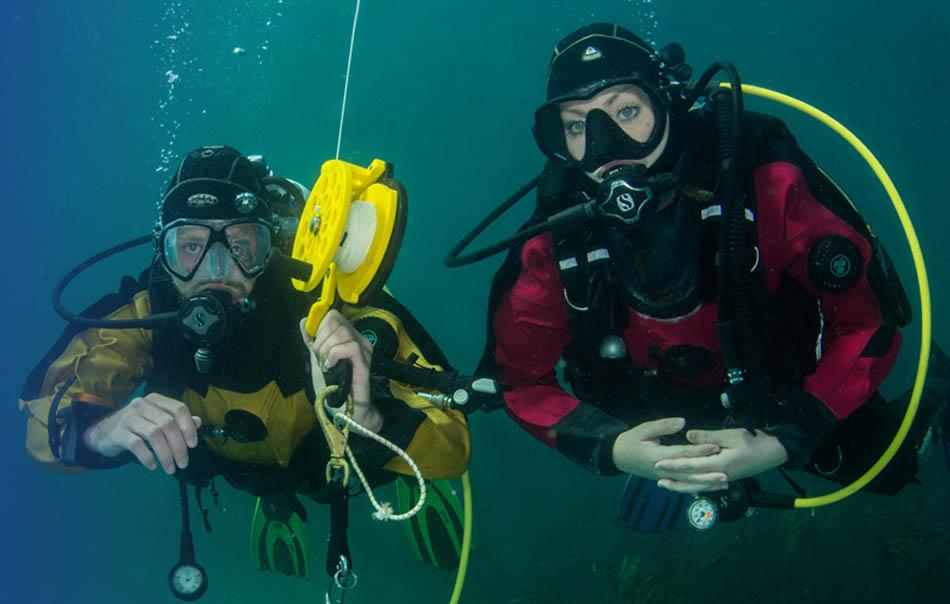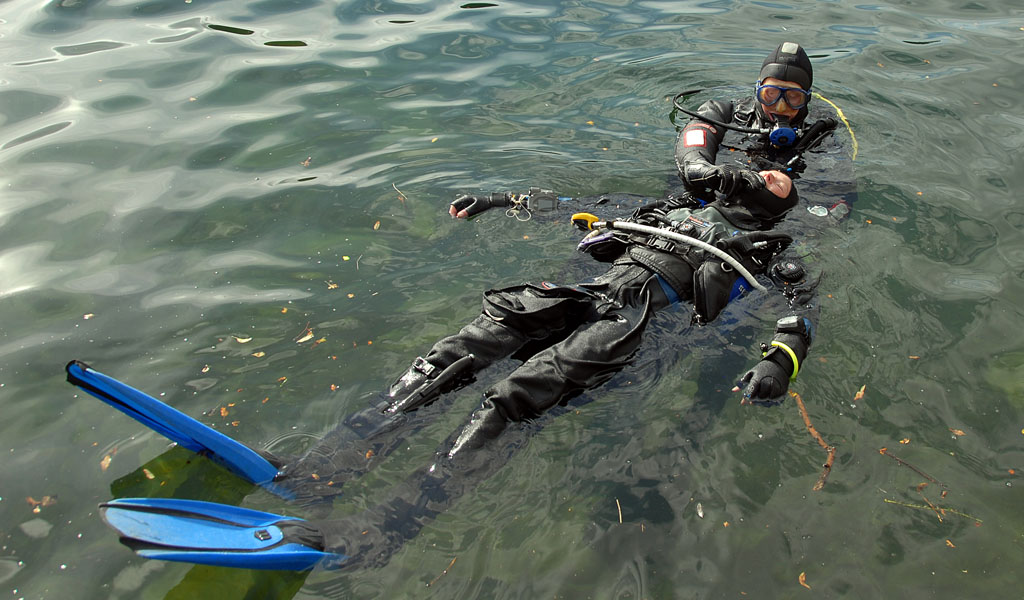
Our rescue skills can go rusty faster than a cheap dive knife. Gordon Procter, BSAC Advanced Diving Instructor and First Class Diver, explains how we can make sure our skills are razor sharp in case they are urgently required.
By far the easiest way to make sure everyone comes back safely is to reduce the chance that you have incidents in the first place. You probably don’t want to start one season jumping straight back into the diving you were doing at the end of the last season. Building back up gently, starting with some safe and easy diving is a much better idea.
Prevention: Being prepared to get in the water
Getting in the water with kit that you know isn’t quite working right will start you on a journey down the incident pit and it’s almost always justified by a statement like… “Oh, that always leaks, but it hasn’t caused me a problem yet”.
Checking your kit over before the season starts, getting the relevant bits of it serviced and trying them out on some easy, early-season dives will help make your diving safer.
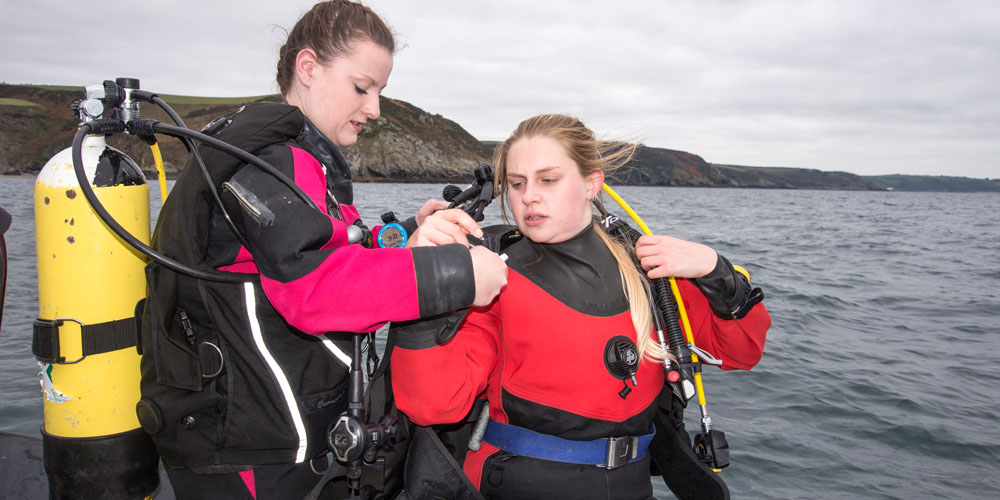
Instructor tip
The best way to instil this attitude in your students and club is to set a good example: if you’ve got dodgy kit then everyone you teach will think that’s okay.
Alertness: Checking in with your buddy
Something I’ve become aware of recently is the importance of keeping in contact with your buddy. I don’t just mean being close enough that you can see them – but also thinking about whether they could attract your attention if they need to. If you’re alert and aware, then you’ll notice any problems your buddy has sooner, and they’ll be easier to fix.
One of my pet peeves is divers not staying in contact with each other. My buddy might be close enough to not get separated from me, but if they are facing away from me for the whole dive then I’m not going to be able to get their attention if I have a bit of a problem, such as sticky ears on a shotline.
I’m not talking about exchanging okay signals every seven seconds, but ascending and descending face-to-face gives me the option of asking you to stop for a minute if I need to.
Paying attention to your buddy also has the advantage that when they spot something interesting, it’s easy for them to show you where it is and you avoid the ‘What do you mean you didn’t see the ship’s bell / octopus / seal?’ moment when you get back on the boat.
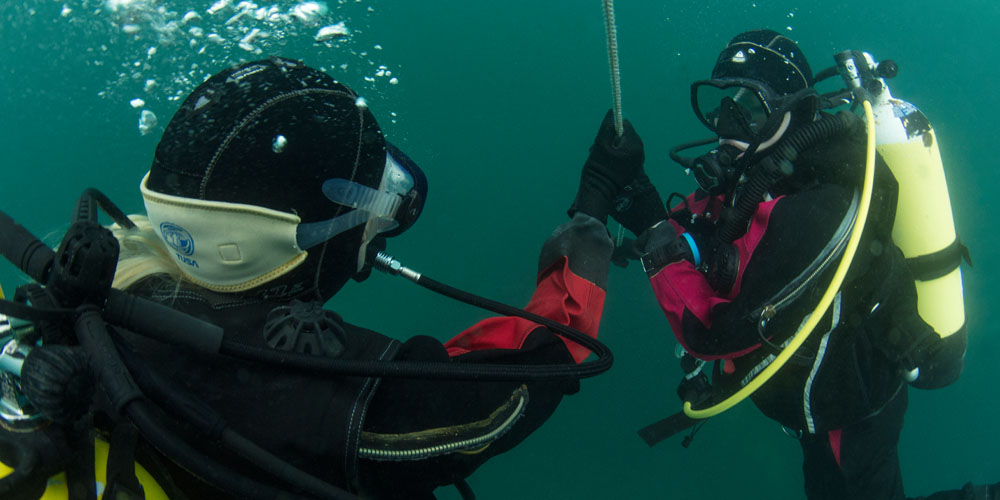
Practise your rescue skills
Even though diving is a very safe sport, incidents do happen. BSAC’s diver training programme includes rescue skills in all the diver grades, but we need to keep them practised so they work when we need them. I reckon there are many divers that learned 20 years ago and haven’t practised any of their rescue skills since!
So, what sort of things should you be practising?
Alternate Source Ascents
If your buddy runs out of gas, they are having a bad day; their priority will undoubtedly be to get access to the gas in your cylinder! Switching them onto your alternate source before their cylinder is completely empty makes the process much easier because when you get to the surface they can simply fill their BC up rather than needing to orally inflate it.
One of the more difficult bits of this skill is getting two divers to hold onto each other and control their ascent together – but actually, you could practice that without even breathing from the rescuer’s alternate source.
Controlled Buoyant Lift
This is your go-to technique for recovering a diver to the surface if they are having problems doing that themselves. There are basically two important bits to this skill:
- Hold on to the casualty
- and Go Up (using their BC – so that if you do get separated, they are definitely heading upwards).
The tricky bit with this skill is controlling the ascent rate – you’ll need to dump gas from the casualty’s BC and drysuit on the way up (to avoid a Polaris missile impression), but be careful not to dump so much that they start heading back down.
Ditching Weights
Getting rid of weights (from a weightbelt, harness, or integrated into a BC) is a sure-fire method of getting to the surface and staying there.
Ditching weights once you get to the surface to make sure everyone stays there is a good idea and every year the Incident Report includes tales of incidents where divers reach the surface but re-descend.
These skills aren’t practised very often, so they aren’t at the front of people’s minds when they are in the middle of an incident – but they are really important.
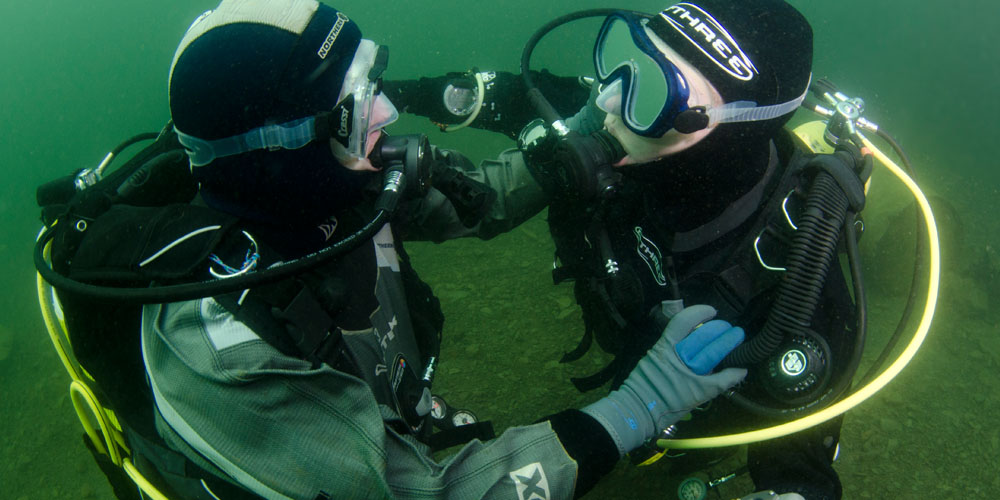
Instructor tip
I suspect divers are hesitant to practise ditching weights because when you drop a weightbelt you’ll want to go and get it (otherwise it quickly gets very expensive!) and that can be a bit awkward.
Why not get your students to wear a second, empty weight belt when they are practicing Alternate Source Ascents or Controlled Buoyant Lifts, so that they have to remove that from the casualty but there is no risk of them losing a full weightbelt of lead in your lesson?
Basic Life Support
One of the UK’s Resuscitation Council main observations in the 2015 guidelines is that training and empowering more members of the public to perform Basic Life Support (BLS) and use Automated External Defibrillators (AEDs) could save thousands of lives each year.
Divers’ use of rescue techniques, endeavouring to save lives in a non-diving context is recognised at the Diving Conference through BSAC’s Safety Awards. Regular training and practice will make divers more confident with BLS (and familiar with the latest guidelines), so better able to contribute to a successful rescue.
Oxygen Administration
Knowing your way around an Oxygen Administration kit is a crucial piece of diving knowledge: responding to a diving incident will almost always include Oxygen.
One of the highlights of the Oxygen Administration course is witnessing everyone else’s best interpretations of divers with a wide range of signs and symptoms.
Slightly surprisingly, the biggest problem I’ve witnessed with an Oxygen Administration kit was someone being overly enthusiastic disassembling it to stow away, so the next time we came to check it before diving we found a case full of bits of Oxygen Administration kit that took some time to reassemble.
Ways to practise your rescue skills
Our branch organises a pool-based ‘Rescue Refresher’ over the winter, so that anyone can come and practice in the pool with an instructor. We do an hour in the pool, going over the basics of Controlled Buoyant Lifts, Alternate Source Ascents and Rescue Breaths.
We also have a start of season ‘Splash-in’ at our local inland site just before Easter. This helps to get all the faff out of the way at the beginning of the season, gives people a chance to check all their kit (including everything they’ve had serviced over winter) and practice anything they want to. For example, maybe they want to make sure their dSMB deployments are really slick or have a go at a Controlled Buoyant Lift because they haven’t done one for a while.
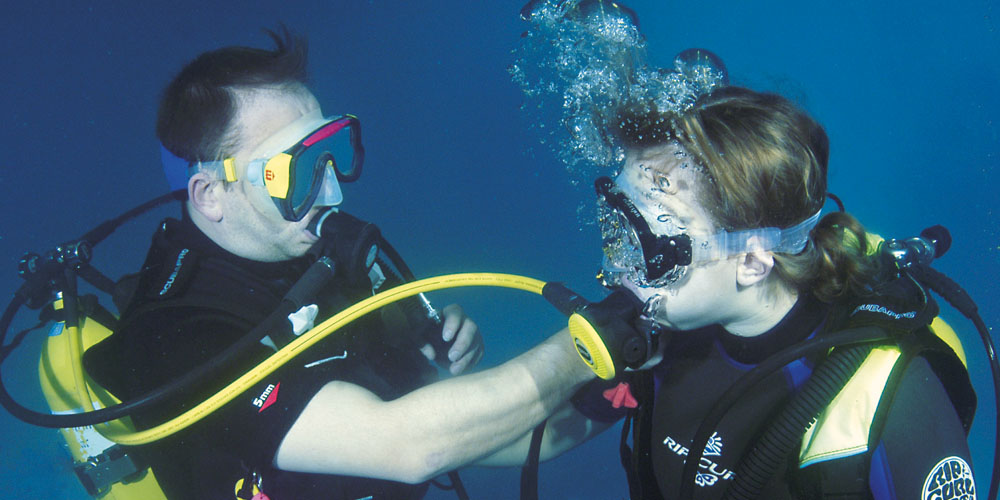
Instructor tip
Don’t underestimate the benefit of instructor-supported practice sessions – just because a diver has got a signature for a particular skill, doesn’t mean they won’t appreciate your help in keeping up-to-date and regularly practiced.
Don’t feel like you need to wait for a dedicated practice trip though – there’s no reason why you can’t practice on a normal dive. For example, you could agree with your buddy that you’ll make an alternate source ascent at the end of your dive – just make sure you agree with them and your surface cover before you get in, because I’m not sure they’d appreciate a surprise ‘Out of Gas’ signal, only to discover later that you were practising!
There’s also a load of BSAC Skill Development Courses that give you a chance to refresh and practice your rescue skills.
Doing new courses can help refresh some basic skills (for example, the Automated External Defibrillator course is a good way to refresh your Basic Life Support skills).
I did Advanced Lifesaver and realised that it had been a long time since I’d recovered a casualty out of the water into a boat or onto a jetty.
You can also redo courses you’ve already done – I try to make sure there’s an O2 course (Oxygen Administration course) available to our club every year so that all our members can feel confident they are up to date with how to use the club’s O2 kits.
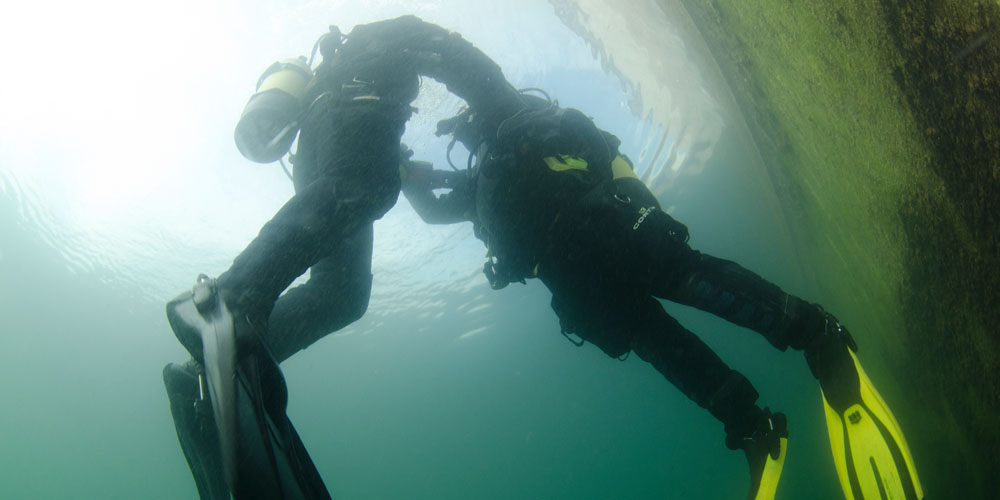
Instructor tip
Teaching a wide range of skill development courses can help to keep your skills up to date and your knowledge broad.
Keep it Real
The other thing to watch for is that you can still do all these rescue skills when you are diving as you would for real – I know I often take less kit with me for a quarry day than I would for a day out on the club boat.
It’s worth practising your rescue skills with the range of kit that you and people in your club actually use – on my list for this year is to practice CBLs with some of my friends using rebreathers. I know I had a bit of a surprise doing my Dive Leader CBL drills with a buddy on a twinset and a wing because the weight distribution was different to the single cylinder and stab jacket I was used to.
The most important thing to keep real is a sense of perspective: diving is a very safe sport, so please don’t convince yourself that diving is dangerous and take up golf after reading this – but we owe it to each other to keep our rescue skills razor sharp.
Learning Curve article from SCUBA issue 79.
New to BSAC? Brush up your rescue skills with your local BSAC club
Send your postcode to hello@bsac.com and we'll help you find the right scuba club for you. Or if you fancy a chat call us 0151 350 6226 (Mon - Fri, 9 - 5:30).




